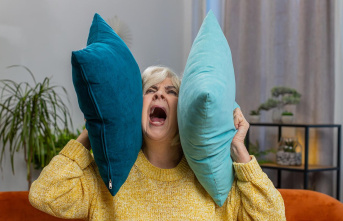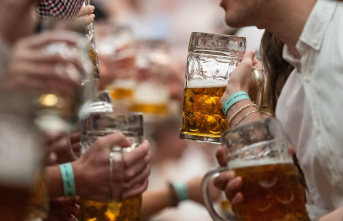The fascinating thing about research is that you contribute something to the world that will stay. And that you can help many people. A nice thought, I think.
The fact that I got involved with white blood cells is certainly due to my curiosity and my interest in natural sciences and medicine. So I've always wondered what actually happens to the blood samples that are taken from patients in doctor's offices. So when I had to do an internship in the twelfth grade, I decided to go to a laboratory - and was quite surprised that so many activities there were still done manually by people.
If you want to detect blood diseases, cell counts play an important role. How high are the values for red and white blood cells, how high are the blood platelets? In the case of leukemia, the number of white blood cells, the leukocytes, is often increased. There are many different classes of leukocytes: lymphocytes, monocytes and granulocytes. The employees in the laboratory put the blood samples under the microscope, go through 100 white blood cells and assign them to the respective leukocyte class.
This type of classification is time-consuming. I thought that should be done in a matter of seconds with a machine. But in 2018, when I was doing my internship, the appearance of the cells on the blood smears was only assessed manually.
Back then I read a lot about artificial intelligence and machine learning. So I came up with the idea of classifying the leukocytes using deep learning. The opportunity was perfect, I was simply in the right place at the right time: in the laboratory I had access to valuable data and the expertise of a laboratory doctor. And there are many good resources on the internet showing how to use neural networks to solve such classification problems.
I programmed a neural network myself step by step and fed it with training data. To do this, I had to show the computer the different images of the leukocytes and tell it which class they belong to. You're basically asking the computer to guess what type it might be. With the so-called loss function, you can then measure how far the guess of the computer deviates from the correct answer. The model of the neural network must be adjusted in such a way that the "loss" is as small as possible. I gave the computer about 1500 images of white blood cells to train it.
Initially, the classification did not work reliably. I had to change the program again and again, which was sometimes frustrating. I didn't give up, but kept trying, so that the accuracy kept getting higher and higher. I also decided to submit this work to "Jugend forscht", which gave me additional motivation. Another thought was that automating routine work could relieve labs, especially now that it's so hard to find skilled workers.
In the meantime, the use of artificial intelligence in medicine has become widespread and it is hard to imagine life without it. I am happy to see that my idea is already being used.
Cancer research keeps me busy. I am studying medicine and want to do my doctorate soon. So many people get cancer, often terminally, and so many unanswered questions. But I'm sure that research and a better understanding of the disease will open up new therapeutic options. We can also fly to the moon and soon even to Mars. 100 years ago, no one would have thought that possible.











